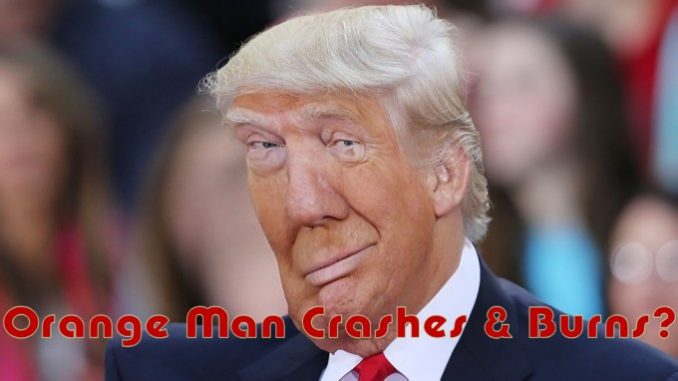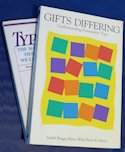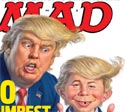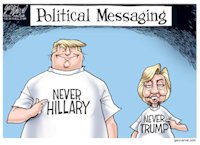
- About the MBTI
- Verify Your MBTI Type
- Personality Patterns
- MBTI Articles & Resources
- Article Directory for Educators & Students
- Books on Personality Types
- Emotional Intelligence & Personality Type
- Career Planning & MBTI
- MBTI Business Applications
- Lenore Thomson - Carl Jung Personality Type
- Site Map - Master Directory of All Articles
- MBTI Consultant Links
- Personality Type Workshops & Conferences
- Links to Other Type Websites
- Murder Mystery Business Theatre
- About Us
Organizing the 16 Personality Types into Type Families. Finding your "True Type"
Verifying your Myers Briggs Test * score.

Before we get into the subject of validating your conclusions about what is your best fit or true Personality Type, I'd like to acquaint you with the some commonalities among the various Personality Types.
According to Myers Briggs Educator Danielle Poirier, the dominant mental function is the most distinctive marker of a person’s personality type (aka mbti type). Following this principle, she organizes the 16 Myers Briggs Personality Types in four clusters:
The Four Primary Myers Briggs Personality Types |
|
Dominant Intuitive Types |
INFJ, INTJ, ENFP, ENTP |
Dominant Sensing Types |
ISFJ, ISTJ, ESFP, ESTP |
Dominant Thinking Types |
ISTP, INTP, ESTJ, ENTJ |
Dominant Feeling Types |
ISFP, INFP, ESFJ, ENFJ |
|
|
These four groups are similar to the four Temperament Types developed by David Keirsey. However Kiersey "sliced the pie" a little differently, dividing Myers' 16 types into four groups with 4 types in each group. The four types with with NF in the code he called the Idealists; the 4 types with NT in the code he called the Rationals; the 4 types with SJ in the code he called the Guardians; and the 4 types with SP in the code he called the Artisans. Other authors have done similar re-composing of Myers categories. Some use colors for example.
While all of the alternative groupings, including Keirsey's Temperament Types, are interesting and provide worthwhile insight, I've come to believe that the most helpful is the organization favored by my friend Danielle Poirier. She believes that the mental process that is a person's most dominant mental process has the most powerful influence on a person's personality development. Each of the four key mental processes that are part of Myers and Jung's theory of types have four MBTI types associated with them as the dominant mental process or function. (Sensing, Intuition, Thinking, and Feeling). So Poirier believes the kinship amongst the four types who share a given dominant mental process is stronger than what you'd find among the Kiersey Temperament Types (although they agree on two of the groupings: NT and NF).
If you examine the MBTI Type letters within each of the four family groups, you’ll note the Personality Types within a given cluster sometimes share only one letter with another member of their group. Some would find this odd, yet none-the-less all the types within a cluster have a solid basis for collaboration and communication because they share the same dominant mental function or mental process.
After a person's dominant mental process, next in influence on the characteristics of the personality is energy orientation: Introversion or Extraversion. So if we further divided Poirier's four groups we'd have the following:
The 8 Jungian Personality Types |
|
Dominant Introverted Intuitive Types |
INFJ & INTJ |
Dominant Extraverted Intuitive Types |
ENFP & ENTP |
Dominant Introverted Sensing Types |
ISFJ & ISTJ |
Dominant Extraverted Sensing Types |
ESFP & ESTP |
Dominant Introverted Thinking Types |
ISTP & INTP |
Dominant Extraverted Thinking Types |
ESTJ & ENTJ |
Dominant Introverted Feeling Types |
ISFP & INFP |
Dominant Extraverted Feeling Types |
ESFJ & ENFJ |
Note within each of these 8 sub-groups, the individual Personality Types share 3 out of 4 MBTI ® letters. So not only do they share the important core mental function, individuals within each of these groups will likely share a number of behavior traits that are correlated with the three MBTI Type letters they share. This organization creates a more dramatic contrast to Kiersey's temperament types. For example, the above table would have some Rationals and Idealists in the same box (INFJ and INTJ & ENFP & ENTP are two).
Sometimes the MBTI assessment (or any other assessment of PersonalityType) gives the "wrong" answer, fails to determine "Your Best Fit" Personality Type
|
While the MBTI ® meets the conventional test standards for reliability and validity, accurately measuring something extremely complex like the whole of a person's personality type is bey)ond the power of our traditional psychometric tools. A whole host of conditions impact the "test taking" situation, including mood, life situation, aspirations, work implications, degree of self-insight, gender expectations, level of psychological maturity, to name just a few. Then add the fact that the human mind is constantly evolving, learning and unlearning things, and maturing-growing. All of these factors are why Isabel Myers originally called her instrument an "indicator." The instrument points in a direction - gives a clue - but not a definitive answer; the MBTI and other similar instruments attempting to measure Personality Type (including my own - the Cognitive Style Inventory) are not tests. They can only point the way; give a general direction.
Sometimes this directional pointing is spot-on. At other times, a course adjustment is needed; the identified MBTI Type letters may be close but not correct in identifying which of the 16 Personality Types is a person's best fit. For this reason, an important part of the accredited MBTI administration process involves having the client verify the score through a variety of processes that assist in better understanding key concepts related to psychological type and in doing a degree of self-reflection in understanding (and appreciating) one's own inner workings.
As an MBTI Administrator, one of the most common "type score" uncertainties I've encountered is when the score on the MBTI personality type instrument is close to the borderline between two type letters. For example, a person might score close to the borderline between ENTJ and ENTP. Too frequently they remain uncertain when they employ the accepted practice of reading the respective Personality Type descriptions of the two competing types; they will find a number of phrases in each of the descriptions of characteristics of the two Personality Types that seem to fit.
This is understandable as the two Types do share 3 of the 4 MBTI letters. But if you look at the core mental function of these two types in the above example, they are quite different. ENTJ has at its core Extraverted Thinking; ENTP has at its core Extraverted Intuition. So while the two types share a number of characteristics, the "primary engine" driving each type is different. So what needs to be explored in this case to determine the proper Type affiliation is the nature of these two different mental functions and to what degree each fits the person exploring their Personality Type fit.
Another example. Sometimes the the uncertainty between two type affiliations is not around the core mental function. Perhaps the Type score is near the borderline between INFJ and INTJ - both sharing the core Introverted Intuition as their dominant mental function. Here the distinction is between Extraverted Feeling and Extraverted Thinking. The person may indeed feel equally drawn to Feeling and Thinking - but Type Dynamics theory suggests most typically each would be more comfortably oriented in opposite energy dimensions. A sensitive INTJ will more comfortably Introvert his Feeling nature; a logical INFJ will more comfortably Introvert her Thinking nature . . . and visa-versa.
What is your Dominant Mental Process, Your Greatest "Super Power"?
So it is my belief that by better understanding the nature of the 4 mental functions in their attitudes (Extraverted and Introverted forms) one can determine with greater certainty the best fit within the 16 Personality Types. These are illustrated in more detail on the next page - Understanding the Mental Process Functions of the 16 Myers Briggs Personality Types
~ ~ ~ ~ ~
If you are person who is uncertain of your type preferences examine which of the descriptions in the next section seem to best fit your experience and then look at the MBTI type letters aligned with that description.
According to the model, one of the 8 basic styles should seem a natural fit as your core essence and perhaps another one or two styles that act as an auxiliary or complement to your core function. Some of the other functions will seem quite a stretch - being that way would feel foreign. Yet within each of us is a template for better developing all the mental functions (a total of 8 when you consider both the Introverted and Extraverted forms of the 4 basic functions of Thinking, Feeling, Sensing, and Intuition). To the extent you can learn to stretch yourself enough to experience how it is to operate on these functions that are opposite your natural preferences, you’ll find it easier to bridge the gap with those Personality Types who naturally operate on those opposite preferences and mental functions.
 Next: - DESCRIPTIONS OF THE JUNG-MYERS-BRIGGS MENTAL FUNCTIONS OF
THE 16 MBTI PERSONALITY TYPES
Next: - DESCRIPTIONS OF THE JUNG-MYERS-BRIGGS MENTAL FUNCTIONS OF
THE 16 MBTI PERSONALITY TYPES
Other Popular or New Articles on Personality Type
![]() Mobile Friendly Version of our Free Personality Type Test
Mobile Friendly Version of our Free Personality Type Test
The Civil War between Feeling and Thinking

Trump - The Mouth that Roared Once Too Often?

® MBTI, Myers-Briggs, Meyers Briggs, and Myers-Briggs Type Indicator are registered trademarks or trademarks of the Myers-Briggs Type Indicator Trust in the United States and other countries (aka meyer briggs or myers briggs).
* While commonly called a "test" the MBTI ® is not a test but a personality inventory in which there are no right or wrong answers.
![]() Mobile Friendly Version of our Free Personality Type Test
Mobile Friendly Version of our Free Personality Type Test
![]() Learn more about the MBTI
Learn more about the MBTI
![]() Verifying your MBTI or Myers Briggs Test *
Verifying your MBTI or Myers Briggs Test *
* While commonly called a "test" the MBTI ® is not a test but a personality inventory in which there are no right or wrong answers.
|
The MBTI Personality Type of Donald Trump - looking behind the media mask of The Donald.
Leadership Style - Trump vs. Hillary - comparing their contrasting styles and temperament.

Do What You Are:
Discover the Perfect Career for You Through the Secrets of Personality Type

LifeKeys: Discover Who You Are
Sandra Hirsch and Jane Kise have developed an introduction to MBTI ®Personality Types that is integrated with a spiritual message and applications especially relevant to the Christian and faith-based Communities.[More Info Here on ordering this and other books on Personality Type]
LifeKeys Leadership Resource Notebook: Discovering Who You Are, Why You're Here, and What You Do Best (Lifekeys). A Companion Leader's Guide for Christian and Faith-based Study Groups. [Ordering Info Here]
© Published by Ross Reinhold & Reinhold Development 1997 - 2023
Privacy Policy About Us





